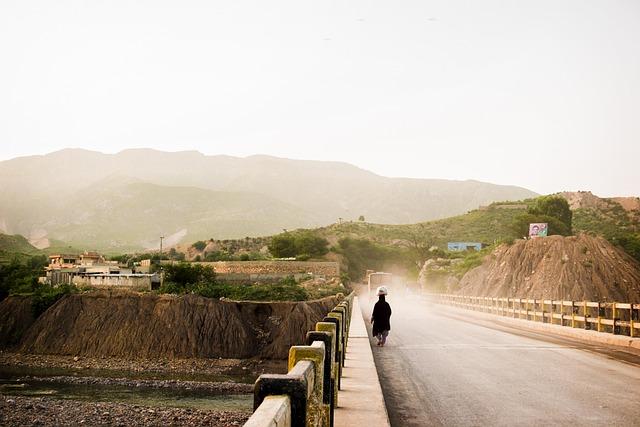In the heart of South Asia, Pakistan stands at a crossroads, where the vibrant tapestry of its media landscape weaves together threads of hope, resilience, and challenge. As the nation grapples with its rich tapestry of history, the pursuit of media freedom emerges as a pivotal chapter in the ongoing narrative of democracy and human rights. From bustling newsrooms to the digital realms of social media, the voices of journalists and citizens alike echo the urgent call for transparency and accountability. Yet, amidst this chorus, shadows loom—pressure from political entities, censorship, and threats to personal safety cast a pall over the quest for unfettered expression. This article delves into the complexities of navigating media freedom in Pakistan, exploring its triumphs and tribulations, and illuminating the path forward for a society eager to embrace the full potential of its freedom of speech. As we journey through the multifaceted realities faced by media professionals and audiences, we aim to uncover the delicate balance between expression and restraint in a country where every word carries weight.
Understanding the Historical Context of Media Freedom in Pakistan
The media landscape in Pakistan has been shaped by a complex interplay of political dynamics, societal demands, and historical events. Since the inception of the country in 1947, various regimes have oscillated between periods of liberalisation and restrictive censorship. This duality in approach reflects the ongoing struggle for power and the contentious relationship between the government and the media. Key milestones, such as the introduction of the Press and Publications Ordinance in 1963 and the Press Freedom Movement in the 2000s, have highlighted both the aspirations and challenges faced by journalists and media institutions throughout history. The repressive measures often manifest in forms such as mandatory licensing and broad regulatory control, aiming to undermine efforts for transparency and accountability.
In recent years, the rise of digital media has transformed the traditional paradigms of news dissemination, challenging the status quo established by print and broadcast outlets. While social media platforms have empowered citizens to express their opinions and report on issues firsthand, they also face significant scrutiny from governmental bodies. Incidents of censorship and intimidation tactics against journalists have been reported, often aimed at curbing dissenting voices and critical narratives. As Pakistan continues to navigate this tenuous landscape, the future of media freedom remains inextricably linked to the broader socio-political environment, where public advocacy, regulatory reform, and international observers play crucial roles in shaping its trajectory.
| Key Events in Media Freedom | Date |
|---|---|
| Press and Publications Ordinance | 1963 |
| Press Freedom Movement | 2000s |
| Emergence of Social Media | 2010s |

The Role of Government Regulations and Their Impact on Journalistic Integrity
The intricate tapestry of media freedom in Pakistan is notably influenced by government regulations that aim to manage the flow of information. While these regulations are designed to maintain public order and protect national interests, their execution often raises questions regarding journalistic integrity. Journalists and media organizations frequently navigate a precarious landscape, where legal frameworks may stifle independent reporting under the guise of curtailing misinformation or preserving state security. The implications can be profound, resulting in self-censorship or a forced alignment with the narratives espoused by those in power, ultimately undermining the role of the press as a watchdog in society.
Furthermore, the fluctuating nature of these regulations creates a climate of uncertainty that can hinder the effectiveness of the media. This volatility manifests in several ways:
- Inconsistent enforcement of laws leading to unequal treatment of media outlets.
- Challenges faced by journalists in securing press freedoms amidst conflicting directives.
- Increased pressure on media entities to self-regulate to avoid state repercussions.
The consequences of these challenges reflect a critical need for a balanced approach to regulation that promotes both accountability and freedom. As the role of digital media continues to expand, the debate surrounding the regulation of information will remain at the forefront of Pakistan’s democratic development.

Challenges Faced by Journalists in Today’s Digital Age
The digital age has transformed the landscape of journalism, particularly in Pakistan, where the rise of online platforms has created both opportunities and daunting challenges. Misinformation spreads rapidly across social media, making it increasingly difficult for journalists to maintain credibility while ensuring their work stands out in a sea of noise. As they strive to verify facts and present accurate narratives, journalists are often confronted with the pressure to produce content quickly, leading to potential pitfalls in accuracy and depth. This scenario is compounded by the threat of censorship, as authorities may impose restrictions that dictate what can and cannot be reported, putting freelance journalists and media houses at risk.
Moreover, the economic pressures faced by news organizations add another layer of complexity to the ethical practice of journalism. With dwindling advertising revenues, many media outlets are forced to adopt clickbait tactics to attract a larger audience, potentially sacrificing journalistic integrity for profit. Journalists, too, have to navigate the challenges of self-censorship, where fear of repercussions, including harassment or violence, may lead them to avoid sensitive subjects such as politics or human rights abuses. In this precarious environment, the balance between informing the public and ensuring the safety of journalists becomes increasingly fragile.

Paths to Strengthening Media Independence and Accountability
To enhance media independence and accountability in Pakistan, various strategies can be employed, fostering a more open and transparent media landscape. One critical approach is to establish robust regulatory frameworks that protect journalists and media entities from political and economic pressures. This includes enacting laws that ensure freedom of expression, safeguard whistleblowers, and promote transparency in media ownership. Furthermore, fostering collaboration between media organizations and civil society can create a collective force, advocating for reforms and stronger protections against censorship and harassment.
Another key pathway to strengthening media accountability lies in investing in journalism education and training programs. By equipping journalists with the essential skills in investigative reporting, ethics, and digital literacy, the media can significantly improve its ability to hold power to account. Encouraging independent media outlets through financial support models, like grants and subsidies, can also help ensure diverse voices are heard. Additionally, establishing ombudsmen or accountability boards can provide a mechanism for public feedback, helping to ensure media outlets operate in a manner that is responsible, fair, and responsive to the communities they serve.
Closing Remarks
as we navigate the intricate landscape of media freedom in Pakistan, we find ourselves at a crossroads of hope and challenge. The journey of journalism in this vibrant nation is marked by a rich tapestry of voices, each vying to contribute to the public discourse while grappling with restrictive environments. The resilience of journalists and media practitioners shines brightly, illuminating paths toward greater transparency and accountability.
As the world around us continues to change, so too must the frameworks that govern media practices in Pakistan. The evolving narrative demands not only an unwavering commitment to the fundamental principles of freedom of expression but also a collective effort to safeguard these rights. Policymakers, civil society, and the media itself play critical roles in fostering an atmosphere where diverse perspectives can flourish.
Ultimately, the landscape of media freedom in Pakistan is not merely a reflection of the conditions under which it operates but a powerful indicator of the nation’s democratic health. By engaging in constructive dialogue and championing the cause of independent media, we pave the way for a future where truth finds its voice, and freedom knows no bounds. Let us remain curious, vigilant, and steadfast in our pursuit of understanding this dynamic and essential aspect of Pakistani society.



